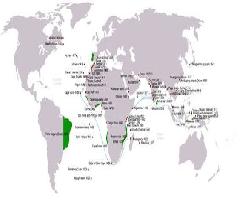The Soviet Union was a state, which was founded upon the principles of Marxist-Leninist ideology, and whose regime was intent upon spreading those principles to all its citizens and to exporting revolution to other countries. After winning the Russian Civil War the Bolshevik regime consolidated its political position as a one party state that Lenin referred to as the ‘Dictatorship of the Proletariat.’ The Soviet regime used graphic design as a means to consolidate its hold on power as well as means of exporting Marxist-Leninist revolution to any country that was susceptible to it, such as Germany (Bullock,1991, p. 431).
In
the Soviet Union once power was secured the Communist Partyleadership was the final judge of what was politically, socially, and culturally acceptable
and what was unacceptable. The Communist Party made those decisions due there been
nobody else in the Soviet Union was capable or permitted to do so. Graphic design was
an important element of consolidating the Soviet regime, via propaganda, education, and
the construction of housing and industrial plants that were intended to end Soviet
backwardness and develop its economy and infrastructure. In the words of Lenin ‘the
Communist Party is capable of unifying, educating and organising a vanguard of the
proletariat’ (Bullock, 1991 p. 86).
The Soviet Union was a revolutionary state whose leadership had initially hoped to
spread Communist revolution across the globe. For a time they were hopeful about the
position in Germany, although the Sparticus Revolt and the self styled Soviet Republic of
Bavaria were crushed by a combination of the army and ex-servicemen in right wing
paramilitary groups such as the Freikorps. The Soviet leadership soon realised that it
needed a combination of mythology and modernity to secure its hold on power using
propaganda and education, extensive coercion, and rapid modernisation. The gist of the
propaganda was that the Soviet Union would be the vanguard of global revolution, whilst
at the same time ending the political, social and economic backwardness inherited from
old Imperial Russia.
The Bolsheviks believed that spreading myths about their destiny to
transform the Soviet Union through state run newspapers, the modern media of cinematic
films and eventually radio would help their campaigns to a Marxist-Leninist version of
modernity. The heyday of Soviet film making would prove to be
debate was still allowed within the Communist party and when the need to establish
myths about the regime was greatest. Stalin was less keen on allowing film makers,
newspaper editors, and graphic designers freedom of expression; in fact it was strictly
subordinated to Stalin’s objectives and plans (Kenez, 1992, p.3).
Whilst Lenin was still alive the most potent myth the regime promoted about itself was
that of ‘Red October’ whilst the red flag became the most graphical symbol for
revolutionaries everywhere across the globe. The red flag was also universally feared in
capitalist states, with the Communist parties of other countries facing repression and
hatred as they were frequently regarded as being unpatriotic. As well as films, the regime
used posters and cartoons to put across its messages.
These were particularly effective methods of propaganda, especially when the high rates of illiteracy at the start of the 1920s are taken into account. Ending illiteracy was one of the Soviet’s regime strategies for modernising such a backward country; it also offered the prospect of making the regime’s propaganda more effective as more people would understand it.
The Soviet regime was willing to work with certain aspects of modernity, although solely as a means to an end, the strengthening of Communism. The direction the Soviet Union might have taken, if Lenin had lived longer, has been the subject of many debates. In hindsight the 1920s would be a freer decade in terms of freedom of expression and debate, yet Lenin was definitely not interested in democratic practices. It was Lenin that constructed the Soviet state infrastructure that Stalin readily adopted towards his reign of terror as well the brutally enforced processes of collectivisation and industrialisation (Roberts, 1996 p.488).
Bibliography
Bullock A (1991) Hitler and Stalin – Parallel Lives, Harper Collins, London
Kenez P, (1992) Cinema & Soviet Society, Cambridge University Press, Cambridge
Roberts J.M, (1996) A History of Europe, Penguin, London
